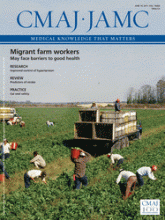With the scientific pendulum appearing to slowly swing away from the value of fluoridating tap water, the United States Department of Health and Human Services has indicated that it will lower the recommended level of fluoride to be added to drinking water.
The partial retreat comes on the heels of city of Calgary, Alberta’s decision to discontinue fluoridation of its drinking water in a bid to save $750 000 per year in direct fluoride costs and a projected $6-million equipment upgrade at its treatment plants.
Although fluoridation proponents argue that such moves invite tooth decay, particularly among low-income groups who can’t afford dental care, US and Calgary officials counter that recent scientific evidence suggests that a high intake of fluoride can place people at risk of bone abnormalities and fractures.
The Department of Health and Human Services is proposing to lower fluoride concentrations in drinking water to 0.7 mg/L from 0.7–1.2 mg/L, the first time that the department has retreated from standards established in 1962. The lower level “provides the best balance of protection from dental caries [tooth decay] while limiting the risk of dental fluorosis,” the department stated in a release (www.gpo.gov/fdsys/pkg/FR-2011-01-13/pdf/2011-637.pdf). About 73% of American communities fluoridate their water.
The new American level is in keeping with that of Canada and reflects a balance between fluoridating water to reduce cavities, while protecting against toxic effects, David Thomas, media relations officer for Health Canada, writes in an email.
Calgary recently became the latest of several major Canadian cities to have opted against fluoridation. Montréal, Quebec and Vancouver, British Columbia decided against it in the 1970s, while Québec City voted against it in 2007 and residents of Waterloo, Ontario, narrowly voted to discontinue fluoridation in a 2010 referendum.

Opponents of fluoridation say the rationale for adding a chemical to drinking water is no longer valid as people, particularly children, now have ready access to fluoridated products and are more aware about appropriate dental care.
Image courtesy of © 2011 Thinkstock
The announcements have renewed a battle over the value of fluoridation, with advocates of adding fluorides arguing that there are economic consequences to discontinuing the practice.
“From an economic perspective, the cost of individual professional fluoride applications to individuals at high risk of dental caries is greater than the cost of community water fluoridation,” Dr. Euan Swan, manager of dental systems for the Canadian Dental Association, writes in an email.
Swan adds that the 60-cent per capita cost of fluoridating water in Calgary is minimal compared to the annual cost of professional topical fluoride applications.
Critics of fluoridation say the justification for adding a chemical to water was more valid in 1975, when fluoridation was first introduced in Grand Rapids, Michigan, as people did not then have easy access to fluoridated products and weren’t as informed about the basics of dental care.
“The connection is probably diet, accessibility to dental care and education on how to take care of your teeth,” says James Beck, professor emeritus of medical biophysics at the University of Calgary and coauthor of The Case Against Fluoride.
Beck argues that there are toxicity, efficacy and moral responsibility issues surrounding fluoridation, and that toxic substances such as “hydrofluorosilicate acid (which are) not approved for human consumption in North America” are being added to water at uncontrolled levels.
“If you administer fluoride by fluoridating the tap water in the community then you have no control of the dose an individual gets per day,” he adds. “It’s a focus on the average adult and doesn’t account for the increased susceptibility of certain groups which include large fractions of us like infants, elderly people and people with particular diseases like kidney disease.”
Others argue that the pros and cons of fluoride have to be weighed more carefully.
“It’s like anything — if you take too much water you drown. As well, too much fluoride is harmful, but taken in dosages recommended it is beneficial,” says Dr. Leonard Smith, a clinical assistant professor in the department of pediatrics at the University of Calgary.
Smith fears Calgary’s decision will be most detrimental to the most vulnerable segment of the population: children. “You’ll see a much higher rate of decay and a lot more children suffering creating a huge impact on overall health that will manifest in several ways,” he says. “People have the misconception that dental decay only has a local impact on the teeth and have to understand that teeth infection has an impact on their whole body. There are potential effects on brain development and on the gastrointestinal system.”











